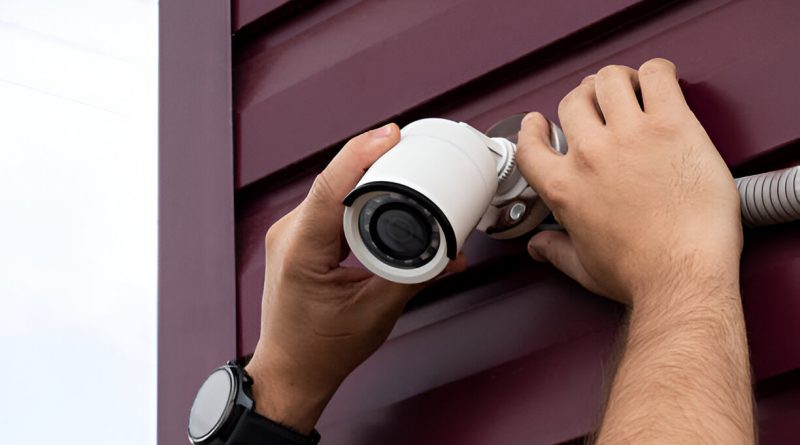Complete Guide to CCTV Camera Installation: Enhancing Security with Ease
Introduction to CCTV Camera Installation
In today’s world, security is a priority for homeowners and businesses alike. Installing a CCTV camera system is one of the most effective ways to monitor your property, deter criminal activity, and gain peace of mind. This guide will walk you through everything you need to know about CCTV camera installation, from selecting the right equipment to setting it up successfully.
Why Install CCTV Cameras?
CCTV cameras serve as a powerful tool to protect your property. They act as a deterrent to potential intruders and provide valuable evidence in case of incidents. Businesses use them to monitor activities, while homeowners rely on them to keep their families safe. With advanced technologies like HD recording and remote access, CCTV cameras have become indispensable for modern security systems.
Understanding the Types of CCTV Cameras
Before diving into the installation process, it’s essential to understand the types of CCTV cameras available:
- Dome Cameras: Ideal for indoor use with a discreet design.
- Bullet Cameras: Best for outdoor spaces, offering long-range visibility.
- PTZ Cameras: Allow users to pan, tilt, and zoom for better coverage.
- IP Cameras: Internet-connected cameras offering remote access and high resolution.
- Wireless Cameras: Easy to install and eliminate the need for extensive cabling.
Choosing the right camera depends on your security needs and the specific areas you want to monitor.
Essential Equipment for Installation
To carry out a seamless CCTV camera installation, you’ll need the following equipment:
- CCTV Cameras
- DVR or NVR (for video recording)
- Power Supply and Cables
- Mounting Kits
- Monitor or Smart Device for Viewing
- Drilling Tools
- Internet Connection (for IP cameras)
Having all these items ready ensures a smooth installation process.
Step-by-Step Process for CCTV Camera Installation
Installing CCTV cameras involves several key steps. Follow these to ensure effective setup:
- Plan Your System
Identify the areas you want to monitor and decide the number of cameras required. - Choose the Right Spots
Select high vantage points for optimal coverage and reduced blind spots. - Install the Mounts
Secure the camera mounts using screws and anchors to ensure stability. - Position the Cameras
Attach the cameras to the mounts, ensuring they are firmly secured and properly angled. - Run the Cables
Connect the cameras to the DVR or NVR using the appropriate cables. Keep the wiring neat and hidden. - Connect to Power
Plug in the power supply for each camera and ensure they’re operational. - Configure the System
Set up the DVR or NVR to record footage. For IP cameras, connect them to your network and configure access settings. - Test the System
Verify that all cameras are working, and adjust angles for the best coverage.
Placement Tips for Optimal Coverage
- Install cameras at least 8–10 feet above ground level.
- Focus on entry points like doors and windows.
- Avoid pointing cameras directly at light sources to reduce glare.
- Use weatherproof cameras for outdoor installations.
- Ensure no obstructions block the camera’s field of view.
Benefits of Professional Installation Services
While DIY installation is an option, hiring professionals ensures:
- Proper placement and wiring.
- Advanced configuration for optimal performance.
- Access to high-quality equipment and warranties.
Professional services save time and offer peace of mind, especially for complex setups.
Common Challenges and How to Overcome Them
- Power Issues: Use reliable power supplies and consider backup solutions.
- Connectivity Problems: Ensure a strong internet connection for IP cameras.
- Camera Damage: Choose vandal-proof cameras for high-risk areas.
- Storage Limitations: Opt for high-capacity DVRs or cloud storage plans.
Maintenance Tips for Longevity
- Clean camera lenses regularly to ensure clear footage.
- Check wiring periodically for wear and tear.
- Update software and firmware for enhanced security.
- Replace faulty components immediately.
Routine maintenance ensures your CCTV system operates smoothly and lasts longer.
FAQs About CCTV Camera Installation
Q1: Can I install CCTV cameras myself?
Yes, with the right tools and knowledge, you can set up a basic system. However, professional installation is recommended for complex systems.
Q2: How much does CCTV camera installation cost?
The cost varies depending on the number of cameras, equipment quality, and professional fees.
Q3: Can I monitor my CCTV cameras remotely?
Yes, most modern systems offer remote access via smartphones or computers.
Q4: Are wireless cameras reliable?
Wireless cameras are reliable but depend on a stable internet connection.
Q5: How often should I maintain my CCTV system?
Perform maintenance checks every three to six months for optimal performance.
Conclusion
Investing in CCTV camera installation is a step toward ensuring the safety of your property and loved ones. Whether you choose to install the system yourself or hire professionals, understanding the process and equipment is essential. With proper planning, placement, and maintenance, you can enjoy the peace of mind that comes with a reliable security system.
For expert guidance and professional installation services, trust Amstech to deliver exceptional results tailored to your security needs.


